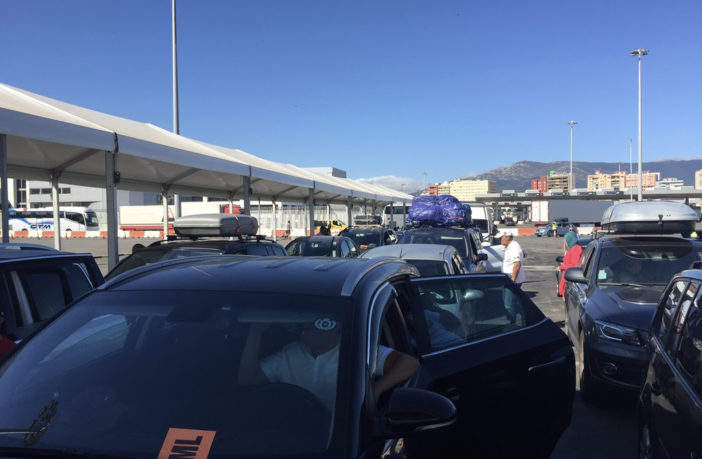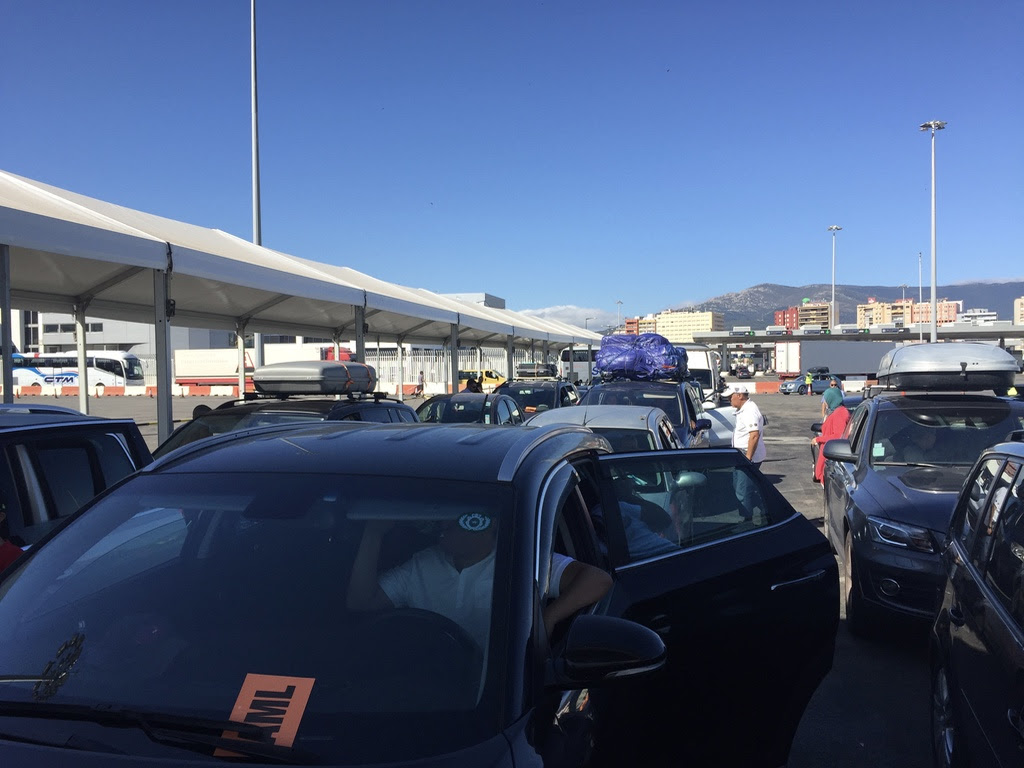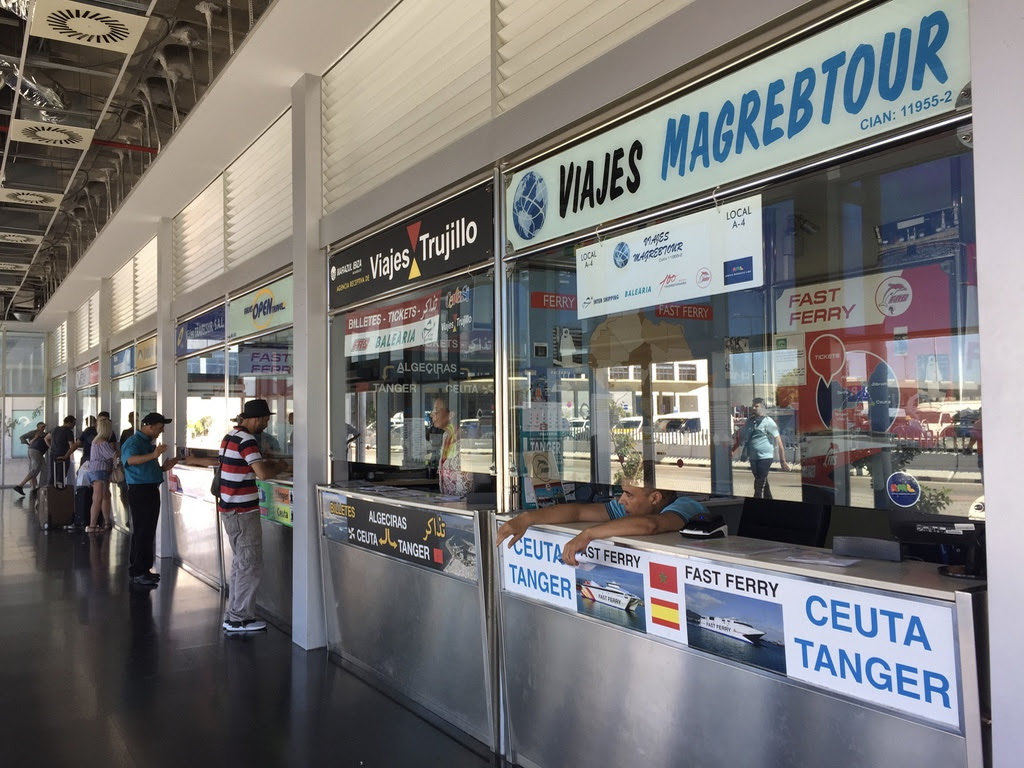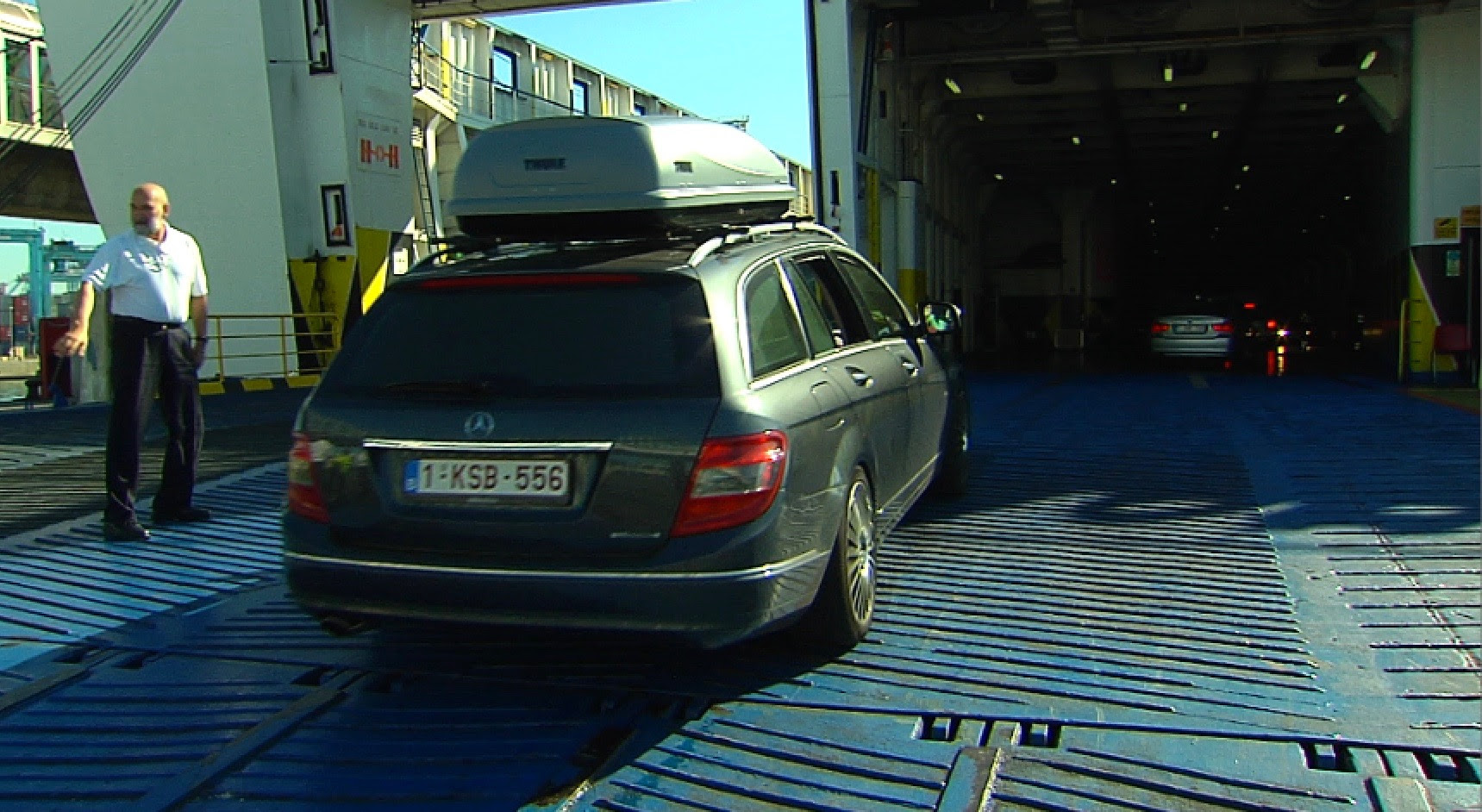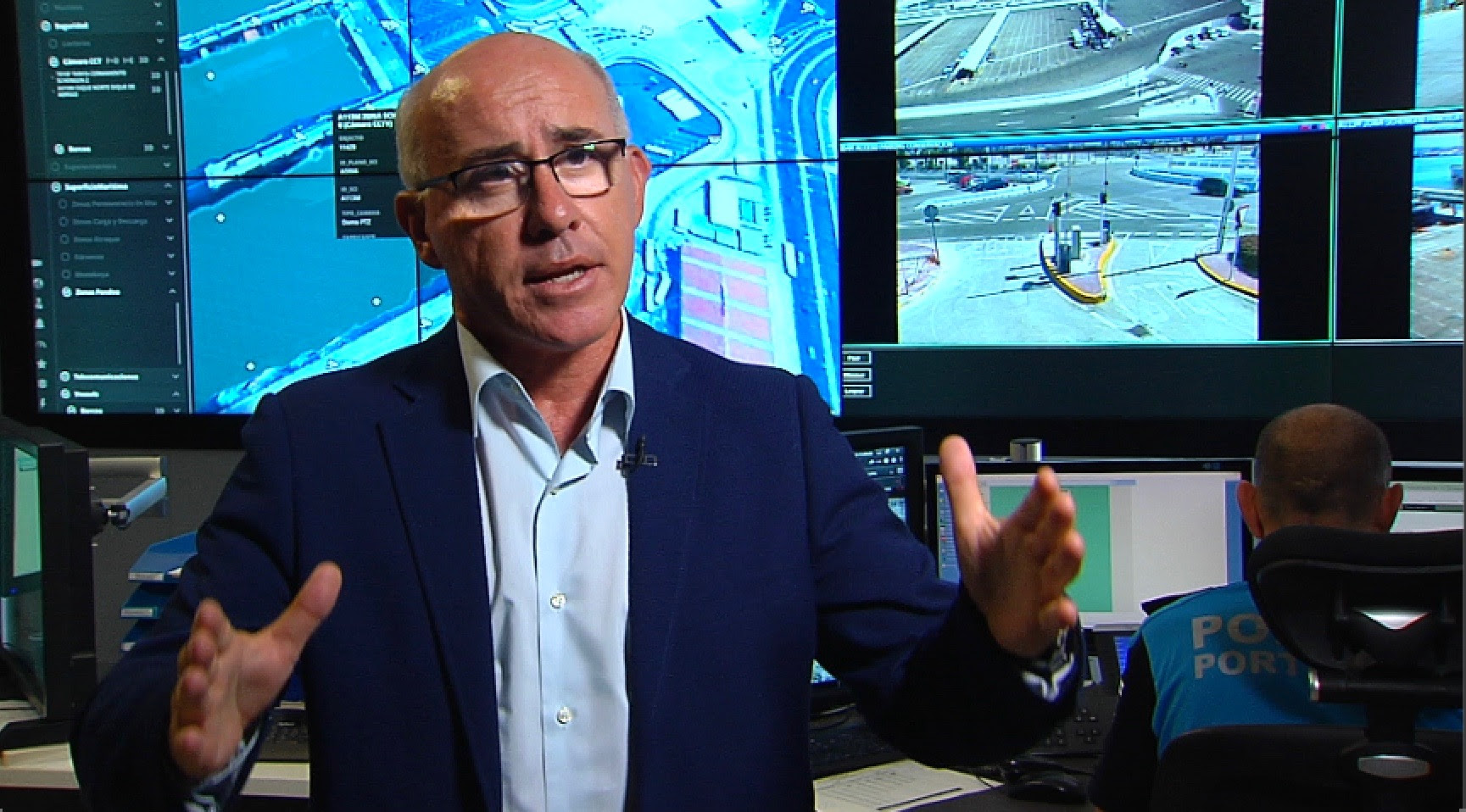CGTN
A Great Southern Migration occurs each summer in Spain, with millions of people who live in Europe heading south, mainly to Morocco, to visit family there and returning north in late summer.
It’s an annual mass migration so big and complicated that the Spanish government has a name for it: “Operation Crossing the Strait,” meaning, the Strait of Gibraltar, where much of the ferry traffic is concentrated between Spain and Morocco.
In 1995, Spain’s Civil Protection Agency said 1.5 million people made the crossing. Last year, the number had doubled to three million people, and about 700,000 vehicles.
This year, the numbers are expected to increase.
Cars waiting to board a ferry for Tangier, Morocco in Algeciras, Spain, on July 25, 2018. /CGTN Photo
The travelers are people who live in Europe and have African, mainly Moroccan, roots. From mid-June through late July, they pack up their families and belongings into cars and vans and travel south from France, Belgium, Holland and elsewhere in Europe through central and eastern Spain, to various ports that have ferry service to Morocco.
In late August and early September, they return north to their European homes.
Managing the mass movement of people through Spain, going to Africa and then returning, is a logistical challenge for Spanish civil and security authorities.
Ticket sales for ferries to Morocco at Algeciras port in Spain. /CGTN Photo
The busiest port of all is Algeciras, where Spanish and Moroccan ferry operators have service daily from 6 a.m. to nearly midnight across the Strait. The ferry ride itself takes just 60 to 90 minutes, depending on the ship.
The Spanish government over the years has tried to make the extended journey before and after the ferry ride into a much smoother experience than it used to be.
Waiting in line in their two cars at Algeciras port to board a ferry to Tangier, Morocco, Mohamed and his son, Karim, said they’ve made the trip from Paris to Morocco for decades. In the past, they sometimes waited up to two days to board a ferry. Now, they say, it’s a lot faster.
A car boards a ferry bound for Tangier. /CGTN Photo
Manuel Alcazar, the Algeciras port’s veteran director of security, said entire sections of the port used for cargo in the winter are set aside for the human migration in summer. That step alone, he said, means that vehicles heading for the ferries don’t back up on Algeciras city streets. Instead, they are in the port compound itself, where authorities have short-term parking for those who need to dash in and buy a ferry ticket, and then clearly-marked vehicle waiting areas, some under shaded coverings.
For the June 15 to September 15 migration period, authorities have pinpointed 14 “critical high intensity” days of the most traffic, mainly the last two weekends in July, for outbound traffic, and the final weekend in August, for the returning traffic.
Alcazar said authorities have encouraged ferry companies to improve and increase their service during the peak periods, so that vehicles are not stuck on land without any place on board.
Manuel Alcazar, director of security at Algeciras port. /CGTN Photo
Ben Bougrine Lahcen, a retired Michelin tire factory worker from France, said Spain has made clear improvements over the years.
“The roads used to be awful when we made this trip,” he said. “Now, there are modern highways, and plenty of gas stations and rest areas.”
Road signs include Arabic to guide travelers to the ports and it’s easy to buy a ferry ticket at highway stops, long before reaching the port.
But the great southern migration presents other challenges for Spanish security forces.
Spanish Civil Guard Lieutenant Jose Antonio Rios Dominguez said it’s an issue of maintaining “fluidity with security.”
“With that many people and vehicles moving, evidently the possibilities of (a terrorist) attack increase. So, we can’t lower our guard,” he said.
As part of a program to battle illegal immigration, police officers from other European nations are stationed at the passport control section in Algeciras for vehicles entering Spain.
The Civil Protection Agency says 20,000 police, medical personnel, translators and Red Cross workers are involved in the logistics of the migration this year, at nine ports.
(Cover: Overview of the Spanish port of Algeciras. /CGTN Photo)




